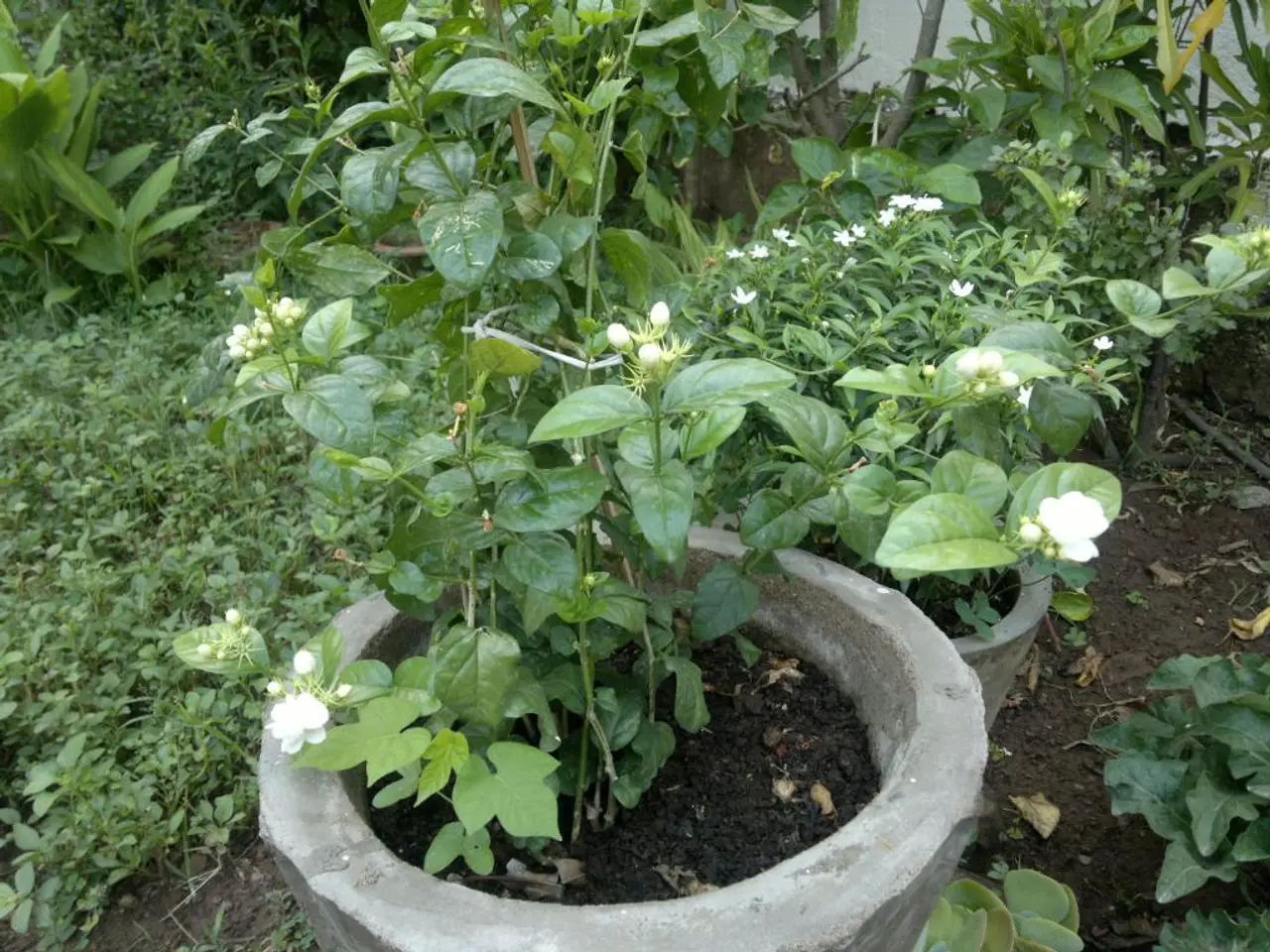Rainy-Season Plant Care for Flower Pots: Crucial Guidelines to Maintain Vibrant Greenery in the Muggy Months
As the monsoon season approaches in India, it's essential to adjust your potted plant care routine to ensure they thrive in the increased humidity and rainfall. Here are expert tips on drainage, soil, watering, sunlight, and pest control to help your plants bloom beautifully throughout the season.
**Drainage**
- Ensure proper drainage holes at the bottom of every pot to prevent water stagnation and root rot. If pots do not have holes, drill a few small ones. - Add a bottom layer of gravel, crushed bricks, or clay chips before the soil to facilitate water escape. - Elevate pots on bricks or stands instead of placing them directly on the ground to avoid waterlogging.
**Soil**
- Use a well-draining potting mix enriched with organic matter like compost or cocopeat to improve aeration and fertility. - Mulching with dry leaves, straw, or coconut husk is recommended to retain moisture, prevent soil erosion, and reduce weed growth during heavy rains. - Avoid heavy, compacted soils that hold excess water.
**Watering**
- During monsoon, reduce watering frequency as natural rainfall provides sufficient moisture. - Water only when the soil feels dry about 1-2 inches below the surface to prevent oversaturation. - After heavy rain, check for water accumulation and remove excess water if needed to prevent root suffocation.
**Sunlight**
- Relocate pots to semi-covered areas like balconies or verandahs to protect from direct heavy rain but still allow indirect light and humidity access. - Most flowering plants benefit from morning sunlight and some afternoon shade during the monsoon to avoid leaf damage and fungal growth. - Ensure plants receive appropriate light based on species requirements.
**Pest Control**
- High humidity during monsoon encourages pests like aphids, mealybugs, and fungal infections. - Regularly inspect plants for pests and apply neem oil spray or other organic pest repellents to manage infestations naturally. - Maintain good air circulation around plants by avoiding overcrowding and pruning overgrown foliage.
By following these tips, your potted plants will be well-equipped to handle the Indian monsoon season. An organic fungicide like neem oil can be sprayed once every 7-10 days as a preventive measure against fungal infections. It's important to check the soil before watering to avoid overwatering, and south-facing balconies or window ledges are ideal for placing flowering pots to receive sunlight. Organic pest repellents like wood ash, diatomaceous earth, or diluted neem oil can also be used to repel pests. Excessive moisture during the monsoon can lead to fungal infections in plants, so it's crucial to maintain proper drainage and watering practices. Heavy rain or gusty winds can topple lightweight plastic pots, so they should be weighted down or moved to sheltered corners.
Considering the increased humidity and rainfall during the monsoon season, it's advisable to focus on home-and-garden activities such as gardening. To ensure proper care for your potted plants, employ practices like using a well-draining potting mix, ensuring drainage holes, elevating pots, and applying organic pest repellents for a thriving garden lifestyle throughout the season.




